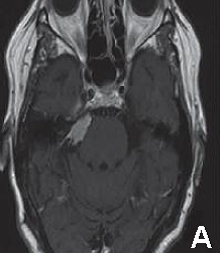Usted está aquí
Peruvian Journal of Neurosurgery
Stereotactic Radiosurgery in Neurinomas and Meningiomas of Skull Base
ABSTRACT
We report our experience with LINAC stereotactic radiosurgery for tumors of the skull base: 32 patients (21 meningiomas and 11 acoustic neurinomas) tracked over 20 months between November 2004 and July 2010. 17 received before radiosurgery, surgical treatment with partial tumor resection. With a median of 32 months after radiosurgery, tumor control is evident in 97% of cases, including 10 cases had tumor regression and tumor necrosis 12, making 22 cases with frank tumor regression. 9 patients remain under observation with no change in tumor size but incipient necrosis. A patient with acoustic neuroma showed tumor growth at 36 months of observation for which he received a second treatment with radiosurgery. Among the functional effects of radiosurgery., 9 of the 10 patients with trigeminal neuralgia were recovered, 2 of 3 cases with oculomotor nerve paresis and 1 patient with ptosis recovered normal ocular motility. A patient with neurofibromatosis 2 deaf evolved despite its tumor regression. Benign tumors of the skull base have their personalized treatment option, either as primary therapy after subtotal resection or recurrence, radiosurgery is the best choice because it provides high rates of regression with control or low risk of complications.



